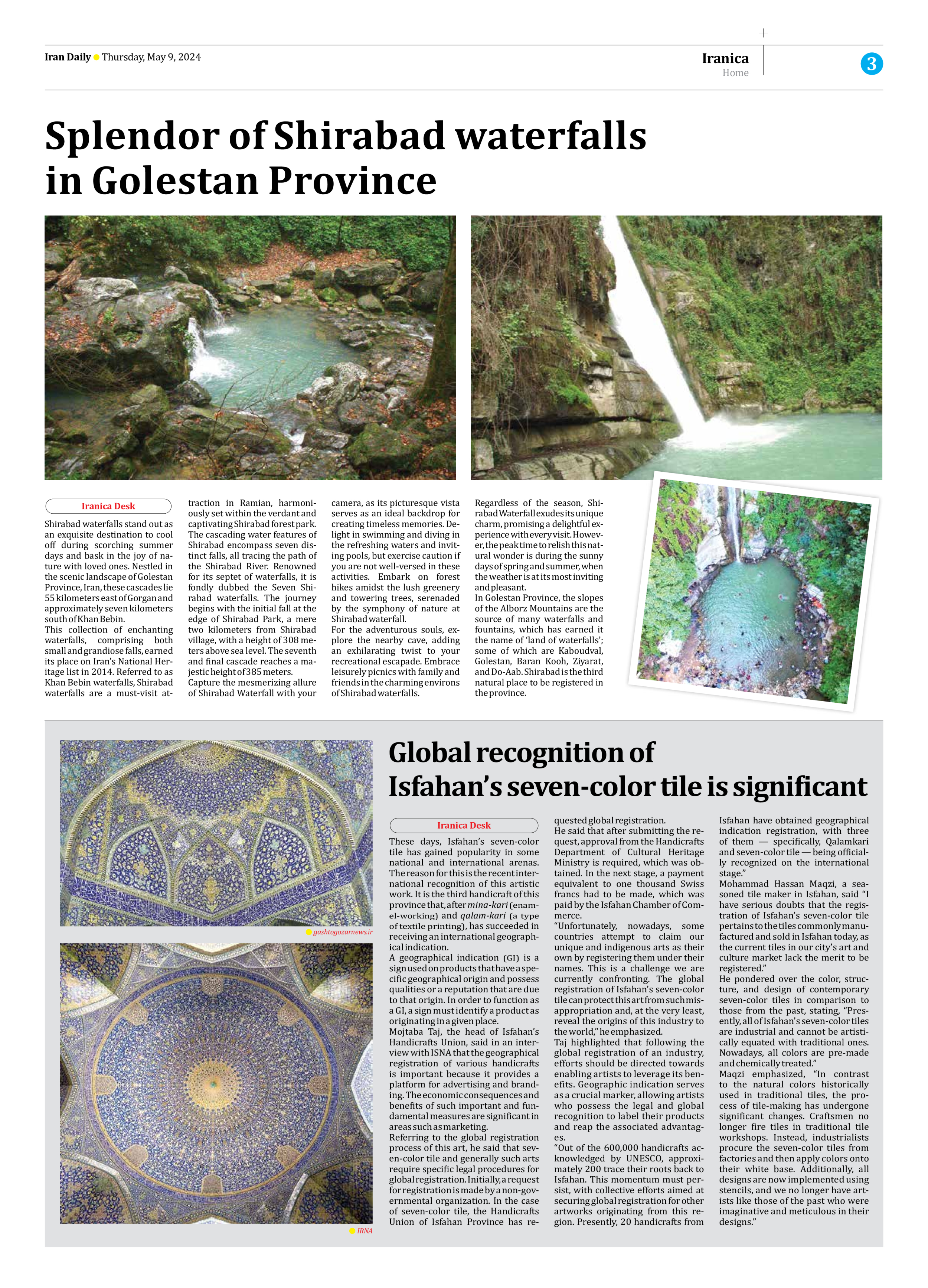
Global recognition of Isfahan’s seven-color tile is significant
These days, Isfahan’s seven-color tile has gained popularity in some national and international arenas. The reason for this is the recent international recognition of this artistic work. It is the third handicraft of this province that, after mina-kari (enamel-working) and qalam-kari (a type of textile printing), has succeeded in receiving an international geographical indication.
A geographical indication (GI) is a sign used on products that have a specific geographical origin and possess qualities or a reputation that are due to that origin. In order to function as a GI, a sign must identify a product as originating in a given place.
Mojtaba Taj, the head of Isfahan’s Handicrafts Union, said in an interview with ISNA that the geographical registration of various handicrafts is important because it provides a platform for advertising and branding. The economic consequences and benefits of such important and fundamental measures are significant in areas such as marketing.
Referring to the global registration process of this art, he said that seven-color tile and generally such arts require specific legal procedures for global registration. Initially, a request for registration is made by a non-governmental organization. In the case of seven-color tile, the Handicrafts Union of Isfahan Province has requested global registration.
He said that after submitting the request, approval from the Handicrafts Department of Cultural Heritage Ministry is required, which was obtained. In the next stage, a payment equivalent to one thousand Swiss francs had to be made, which was paid by the Isfahan Chamber of Commerce.
“Unfortunately, nowadays, some countries attempt to claim our unique and indigenous arts as their own by registering them under their names. This is a challenge we are currently confronting. The global registration of Isfahan’s seven-color tile can protect this art from such misappropriation and, at the very least, reveal the origins of this industry to the world,” he emphasized.
Taj highlighted that following the global registration of an industry, efforts should be directed towards enabling artists to leverage its benefits. Geographic indication serves as a crucial marker, allowing artists who possess the legal and global recognition to label their products and reap the associated advantages.
“Out of the 600,000 handicrafts acknowledged by UNESCO, approximately 200 trace their roots back to Isfahan. This momentum must persist, with collective efforts aimed at securing global registration for other artworks originating from this region. Presently, 20 handicrafts from Isfahan have obtained geographical indication registration, with three of them — specifically, Qalamkari and seven-color tile — being officially recognized on the international stage.”
Mohammad Hassan Maqzi, a seasoned tile maker in Isfahan, said “I have serious doubts that the registration of Isfahan’s seven-color tile pertains to the tiles commonly manufactured and sold in Isfahan today, as the current tiles in our city’s art and culture market lack the merit to be registered.”
He pondered over the color, structure, and design of contemporary seven-color tiles in comparison to those from the past, stating, “Presently, all of Isfahan’s seven-color tiles are industrial and cannot be artistically equated with traditional ones. Nowadays, all colors are pre-made and chemically treated.”
Maqzi emphasized, “In contrast to the natural colors historically used in traditional tiles, the process of tile-making has undergone significant changes. Craftsmen no longer fire tiles in traditional tile workshops. Instead, industrialists procure the seven-color tiles from factories and then apply colors onto their white base. Additionally, all designs are now implemented using stencils, and we no longer have artists like those of the past who were imaginative and meticulous in their designs.”







